Watch the video:
I’m going to break it down into three major groups: angles, shots and movement.
Camera Angles
Camera Angle refers to the placement of the camera and the direction which the camera is looking at. Camera angles are useful to show the dynamics between the characters and the environment they are in.

1. The God’s Eye Angle
From the perspective of the Almighty Creator who will have eyes on everything, not just the Earth. This angle is majorly used to show galaxies and clusters far away. Space exploration and Sci-fi are two genres which will use this shot on a constant basis. It can be used to show the insignificance of this planet when compared to the vast mystery that is the universe.

2. The Drone Angle/Bird’s Eye View
The bird eye’s view or the drone angle will be a top down shot from the perspective of a drone or a bird. It can be used to create a sense of topography. This angle is mainly used to provide an overview of the place the scene is set in.

3. The High Angle
The camera in this shot will be looking down on the subject. Often times to achieve this angle, the camera will be placed higher than eye level. This placement is used to create a sense of power or domination over the subject in the frame. Often this angle has been used to show the subject as weak or powerless. It can also be used to show the character reaching out to their creator.

4. The Eye level Angle
This angle is achieved when the camera is placed at the eye level of the subject in the frame. This angle is often complimentary to the normal shot, somewhere in the vicinity of what the human eye sees. This will be the most used shots for dramas, sitcoms, comedies etc.

5. The Low Angle
The inverse of the High angle shot, the Low Angle is achieved by pointing the camera up at the subject. To achieve this shot, you can place your subjects on a high ground or bring the camera down. This shot will show the subject to be dominant and powerful in the frame. Spike Lee is famous for using the low angle to show his protagonists in power.

6. The Ground level Angle
In the Ground level angle the camera will be at the ground level. This angle has been used a lot to show people that have fallen on the ground, like a protagonist who has had a hard fall. This angle can also be used an introductory shot for a presumably powerful person. This angle can also be used to show someone down on their luck.

7. The Fallen Camera Angle
This camera angle is used to show a camera that has seemingly fallen on the ground. While it looks random it is actually a meticulously thought out process to film through this camera angle. This angle needs to capture everything important while seeming to fall randomly. Many filmmakers use crash cams for this specific purpose in their films.

8. Camera Flat on the ground
This camera angle is achieved by placing the camera flat on the ground looking straight up. This shot can be used extensively for showing a depth of a cave or a hole that someone has to climb out of. It can also be used to show the POV of the protagonist if they have fallen flat on the ground and are looking up at the stars. Here in The Shining, director Stanley Kubrick shows the character of Jack Nicholson to be looming over the audience and in absolute control of the situation although in the scene he is locked in the pantry.

9. The Upside Down Angle
A camera angle where the subject seems to be placed upside down. Often times the camera is placed upside down. A movie called Upside Down by Juan Diego Solanas used this camera angle extensively. An iconic example would be the floppy disk heist in Mission Impossible 2. Another stark example of the subject themselves being upside down for a shot is any time Spider-Man descends down to sneakily take out a goon or even the infamous Spider-Man kiss from the first Spider-Man directed by Sam Raimi.

10. The Over the Shoulder Angle
A widely used camera angle while filming conversations between two characters, the Over the Shoulder shot is achieved by placing the camera behind one of the actors and it shows the shoulder of one actor and the face of the other actor. Usually in this shot the actors are facing face to face but some exceptions can be made to show disagreement between the two characters.

11. The Over the Body Angle
Similar to the Over the Shoulder angle, the Over the Body angle is achieved when the camera show the body of one actor and the face of another actor, standing face to face.

12. The Cowboy Angle
In the Cowboy angle, the camera shows a hip of one actor and the face of another actor, standing face to face. Popularized by westerns and specially the shootout and quick draw scenes in the said westerns, this angle was used to focus primarily on the gun upholster of one actor and the expressions of another.

13. The Point of View or POV Angle
When the camera shows what the character sees it is said to be in the POV or Point of View camera angle. Famously used in Black Christmas (1974) the POV angle shot was then used to show the Point of View of the killer to create nail biting suspense.
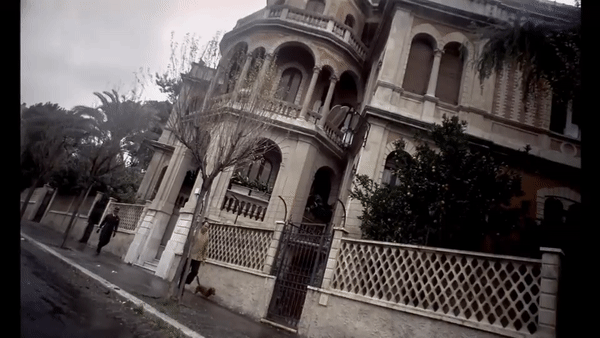
14. The Dutch Angle
In this camera angle the horizon is not leveled but tilted to one side. This angle is a stylized choice and can be very useful for foreshadowing. The Dutch camera angle is often used to paint a character in an evil color. It is also used to create a sense of unrest in the audience’s minds.

15. The Fish Eye Angle
Fish eye camera angle is achieved by using a fish eye lens. Fish eye lenses have an extremely wide focal range ranging from 8-10mm for Super 35mm or 15-16mm for full frame sensors. The Fish eye lenses have heavy distortion towards the ends of the images making it look like as if you are looking out of an orb. The Fish Eye lens camera angle was famous during the 1990s and was used in many hip hop music videos. The most recent use of this lens in a narrative film was by Yorgos Lanthimos in his latest movie “The Favourite”.

16. The Wide Angle
Using a Wide Angle lens will give you a wider angle of view and you will achieve the wide camera angle. These lenses have a focal length range from 16mm to 35mm. Often used in combination with Extreme Long shots and Long shots, Wide angles are used to show the relationship of the character with their environment.
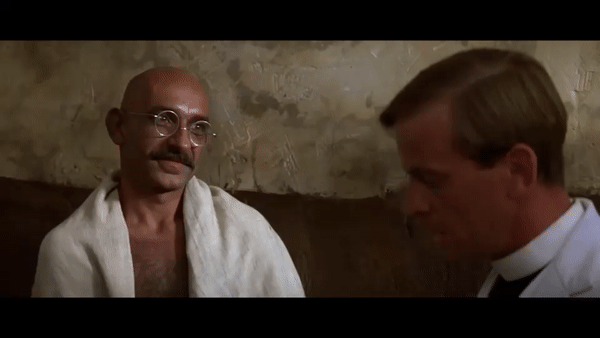
17. The Normal Angle
Using a normal angle lens will create a shot with a normal angle of view. These lenses have focal length range from 35mm to 50mm. This angle is in the same vicinity of focal length as seen by human eyes, hence it is called the normal angle. This angle is often used when the camera serves the role of an observer in the film.

18. The Telephoto Angle
Using the telephoto lens to get a narrow angle of view, will result in the telephoto angle. These lenses have focal length range of upwards of 70mm to 200mm. Often used to film people from a far off distance. Telephoto lenses often have an image compression effect which makes the images look flatter and background seems much closer to foreground. This can produce flattering images of many faces if done correctly. Many cinematographers prefer using the medium telephoto for this very reason.

19. The Extreme Telephoto Angle
Using extreme telephoto lenses i.e. upwards of 400mm, will give you a very narrow angle of view and a highly magnified image. This is a very specialized camera angle majorly used to film subject way into the distance like planes, birds and the moon. Tinker Tailor Soldier Spy by Tomas Alfredson, has this fantastic example of the extreme telephoto shot. In the shot, it feels like the plane is gonna run over the two people in the shot because of how close it appears due to the telephoto compression.
Camera Shots
Shots refer a series of frames run for an uninterrupted amount of time. You can often differentiate the types of shots by observing the setting of camera, lights, set design and direction of the actors to achieve a length of footage that will serve a specific purpose.

20. The Establishing Shot
Establishing shots, as the name suggests, establishes the location of the scene where it is set in. Often in movies, an external shot of the location is used to establish the location of the scene.

21. The Extreme long Shot
Extreme long shots are often shot from very far away and where your subjects look miniscule. These extreme long shots are used to show the relationships of the characters with their respective environment. They can also be used to show any oncoming massive threat to the subject.

22. The Long Shot
The Long shot is described as the shot showing the full length of the actor’s body. Long shots make for fantastic character introduction shots. They can also be used to show the character’s body language concerning their environment.

23. The Medium Long Shot
In the Medium long shot, one would cover the actor’s body till their knees. This was another type of shot that was often used in combination with the Cowboy Angle in many westerns.

24. The Medium Shot
Medium shots only cover the actor’s body till their waist. This shot is more concerned with the body language of the actor rather than their expressions. This is often the most used shot if you also want to accommodate multiple people in the frame without making it feel like the observer is too far away from the scene.

25. The Medium Close up Shot
In the Medium close up, the frame is cut above the belly of the actor. This shot provides a wonderful balance between attention to the body language and the facial expressions of the actors. These shots are mostly used in combination with Over the shoulder shots to film a conversation.

26. The Close Up Shot
The Close up shot favors the actor’s expression alone. In this shot, only the face is put in the frame. Leonardo Di Caprio’s raging scene in Django Unchained starts with him aggressively yelling in a close up shot, hence amplifying his rage and yelling. Alternatively, the close up shot is also used to draw the audience’s attention to something that they would have missed otherwise.

27. The Extreme Close Up Shot
Extreme Close Up requires the frame to absolutely isolate a part of the actor’s face. It could be their eyes, their lips or their nose. Martin Scorsese’s Taxi Driver features many shots of Travis Bickle’s eyes, this shot was important to show what the character was observing in and around his city.

28. The Macro Shot
When you are trying to show something from a really close angle, you might need a macro or pro lens. The shots captured using these lenses are often called Macro shots. You will find the use of these lenses in many documentaries and films including wildlife.
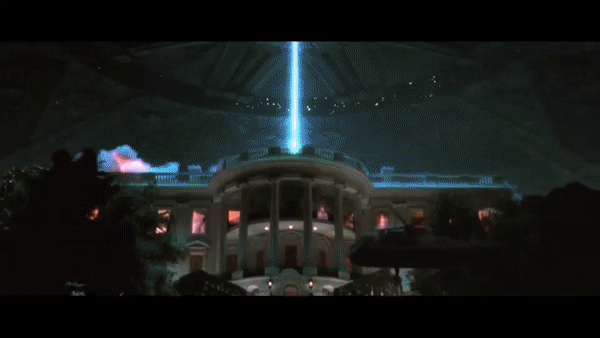
29. The Hero/Money Shot
The shot which you think is going to blow the audience away. It could be in shock, surprise or amazement. In many films, this shot is often where the story has been leading to this whole time or it could be a moment that everyone feared and were working to stop that. Like in the Independence Day when the aliens blow up the White House.

30. The Vertical Shot
Primarily used for social media, the vertical shot has a different aspect ratio than the traditional aspect ratio of the cinema camera shot. However, this shot can be used very well if your film revolves around social media. Damien Chazelle shot a commercial for Apple using the Iphone 12, it consisted entirely of the Vertical Shot.

31. The Split face shot
Split face shot is used when the director only wants to show half the face of the actor in the frame. It is an unconventional shot and is only used when it serves the story.
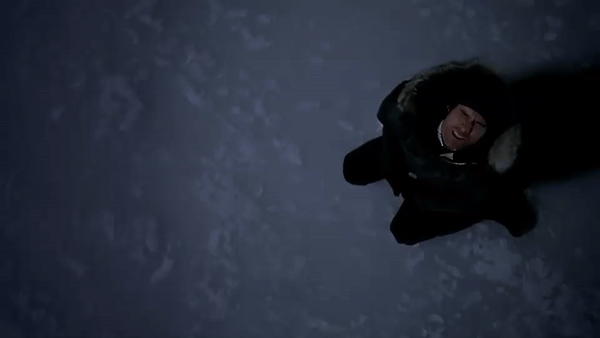
32. The Negative Space shot
When you want your actor to occupy an insignificant space in the frame, you can use this space. Often times the negative space shot is used in horror films, especially if you want the killer/monster creeping up on the unsuspecting protagonist. The most striking example would be in John Carpenter’s Halloween (1978) showed Mike Meyers either emerging from the shadows or popping up from the bed in the frame whereas the protagonist was pushed to one side of the frame.

33. The Split Screen Shot
Split screen occurs when the frame splits into two or more panels to create a comic book like effect. Filmmakers like Edgar Wright and Quentin Tarantino use the split screen shots to make slightly mundane things more interesting and to also cover multiple planes at the same time.

34. The Split Diopter Shot
When a split diopter lens is used to keep two things in focus at the same time. It is used artistically as it needs to serve a purpose in the story. Orson welles’s Citizen Kane has the most notable use of the Split Diopter shot whereas Brian De Palma is the one director who has used the split diopter extensively in his films.

35. The Tilt shift Shot
Tilt shift lens distort the geometry of the frame and changes the plane of focus. Often times it makes originally massive things look like toys. Like in David Fincher’s The Social Network, the Henry Royal Regatta scene was shot using a tilt shift lens hence giving it an unreal look. Roger Deakins made the bold, creative choice in the Assassination of Jesse James by the Coward Robert Ford to shoot many of the scenes using tilt shift lenses. Roger Deakins also made the same choice while shooting the stoned bar mitzvah scene in A Serious Man to show the change in perception of the protagonist after consuming marijuana.

36. The Circular Iris Shot
The circular iris shot can be achieved by masking out a circle in an originally rectangular frame will leave you with a circular frame. This shot can be used to show a perspective of a telescope or a looking glass if you are shooting Pirates of the Caribbean 6.
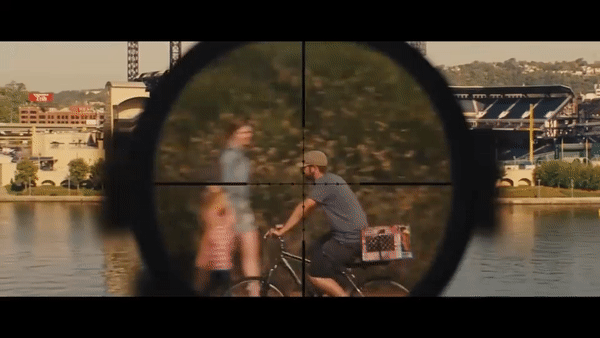
37. The Sniper Vision Shot
Sniper vision shot can be achieved by masking out a circle to specifically recreate a Sniper’s POV through his scope. You will obviously have to add in the crosshairs and different markings to give it an authentic look.

38. The Binocular Shot
Seeing the frame out of two circles will recreate a binoculars point of view and hence will be called as the binocular shot. This and sniper vision shot are mostly used in war films like the American Sniper or Saving Private Ryan.

39. Out of focus Shot
When the shot is purposefully defocused in its entirety. Very useful if you want to show blurred vision or if your character is under the influence of alcohol or drugs.

40. The Diffusion Shot
Using a piece of diffusion glass or a diffusion net to diffuse the frame in its entirety will help you achieve the diffusion shot. Many filmmakers use the diffusion shot to tell the audience that the scene is not set in the modern times. Inside LLelwyn Davis is a wonderful example of the diffusion shot as majority of the scenes have been shot in this manner. Alternatively, the diffusion shot can also be used to film a dreamlike scene.

41. Glamour Shot
When you use diffusion and nets to specifically illuminate the imperfections on the skin of the actor. Diffusing the light makes the light very soft and will be very flattering to the skin of the actor. Majority of high budget fashion films use this shot to make the model look glamourous. This shot has been used to showcase a powerful and glamorous character like here in Devil Wears Prada, a glamour shot is used to showcase Meryl Streep’s character in her element of power.

42. The Rack Focus Shot
When you shift the focus from one point to the other in one shot. That shot is said to be a rack focus shot. Bong Joon-Ho’s The Host uses rack focus in the hospital hallway scene to guide our eyes throughout the scene, it raises suspense and curiosity amongst the audience.

43. The Deep Focus Shot
Shots where almost everything is in sharp focus, from foreground to the background, are said to be in deep focus. Deep focus shots work very well when you want to have an active background. One can give out more information in a single shot with the deep focus shot. Orson Welles’ Citizen Kane had the best examples of deep focus shots in the history of filmmaking. Considering the technological limitations at the time of the filming it is no less than a miracle that he successfully managed to film a deep focus shot multiple times.

44. The Shallow Depth of Field Shot
Using a wider aperture, you can blur out the background and keep the foreground in sharp focus hence achieving the Shallow Depth of Field Shot. This shot is often used to isolate the character from their backgrounds. Shooting at f/2.8 is the most preferred aperture for many cinematographers as it provides a delicate balance between having a shallow depth of field and not allowing too much light into the sensor. Spike Jonze’s Her always has the protagonist in shallow depth of field. Another example would Alejandro González Iñárritu’s Revenant which had the protagonist in shallow depth of field in many of its shots.

45. The Breaking the 4th Wall Shot
When the character looks directly into the camera and talks to the audience directly, it is said to be a fourth wall breaking shot. The most iconic fourth wall break would be in Woody Allen’s Annie Hall. Another example would be House of Cards, which had several instances where Kevin Spacey would talk to the audience directly. Deadpool is another famous character notorious for breaking the 4th wall, in comics and in books. However, there are many ways of breaking the 4th wall as in through writing and editing.

46. The Matte Painting Shot
When a matte painting is used to extend the shot it is called as a matte painting shot. One of the earliest methods of VFX in the history of visual effects, matte paintings have been used in film to shoot some of those iconic, visually impossible scenes back in between the late 19th century to the early dawn of the 20th century. Georges Méliès, the French illusionist and legendary filmmakers is one of the first notable artists to use matte painting shots heavily in his films. This includes the legendary Trip to the moon. Black Narcissus is another great example of brilliant execution of this technique. The most notable use of a matte painting shot has to be the Darth Vader’s Imperial March in Star Wars by George Lucas.

47. The Chroma Key or Green/Blue Screen Shot
The subject, when filmed in front of a colored background which can later be removed in post-production is said to be in a Chroma Key or a Green/Blue Screen shot. The evolved version of the matte painting shot, this technology provides filmmakers across the world the freedom to film whatever they can virtually imagine.
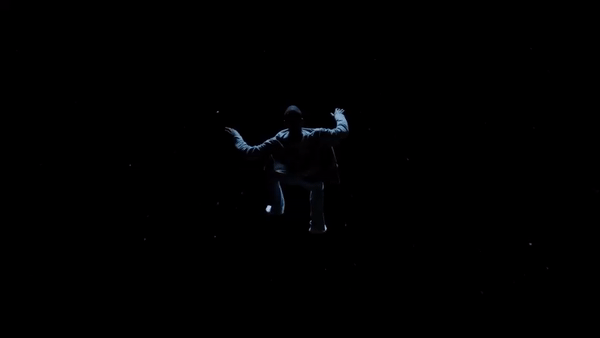
48. The Limbo Shot
The Limbo shot can be achieved by shooting your character against a jet black background, they will appear as if they are suspended in a limbo. Often used to show introspective conversations, or as the name suggests, to show a person stuck in a limbo. Jordan Peele’s directorial debut Get Out has used the limbo shot in their infamous the sunken place scene.

49. The Vignette Shot
When the edges of the frame are darker or lighter than the center it is said to be a Vignette shot. This shot is used to draw the audience’s eye in the center. It can also be used to showcase a sense of isolation of the character from their environment.

50. The Tunnel Vision Shot
When the edges of the frames are blurred out but the center of the frame is in focus. It is used to show moments of extreme focus and concentration on a specific detail by the character. You can also combine this with the dolly zoom in, especially if the character can see the finishing line, to give a sense of being close to victory.

51. The Single or the Solo Shot
When there is only one character in the frame it is said to be a Single shot or a Solo shot. This works well if the character is having a moment and they are the only ones important at that time. This shot is usually reserved for introductory shots or hero shots as they are quite a lot of work to execute and they only focus on one character at a time.

52. The Two Shot/Double Shot
When there are two people in the frame it is called a two shot or a double shot. This is the most used shot for any sort of conversation. It is easy to execute and gets the job done well. It also shows the dynamic between the two characters. If you combine a double shot with a medium close up you will get the facial expressions and the body language of both the characters at the same time.
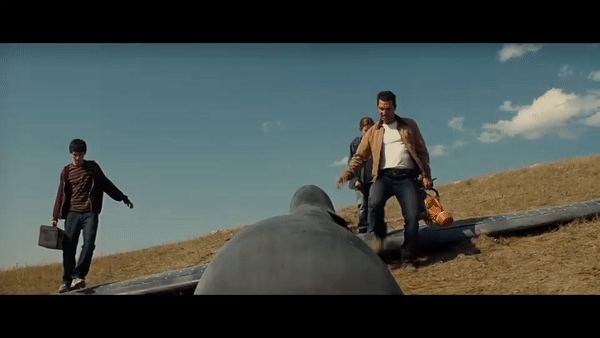
53. The Three Shot
Three characters in the frame will lead to the Three shot. These has been used in multiple scenes across films if there are three main characters. Like in Harry Potter and the Philosopher’s Stone, Harry, Ron and Hermione were shown in three shot whenever they were roaming around the campus. Shots with three people does require meticulous blocking and rehearsals. Anything more than three people in the frame goes to a group shot. Bong Joon-Ho’s Memories of Murder is a prime example of the Ensemble or the Group Shot.

54. The Center Framing Shot
Whenever the subject is framed to be in the dead center of the frame, the shot is said to have center framing. Stanley Kubrick has used the center framing shot extensively throughout his entire filmography. Using it with the dolly in can give the audience a sense of being sucked into the frame itself.
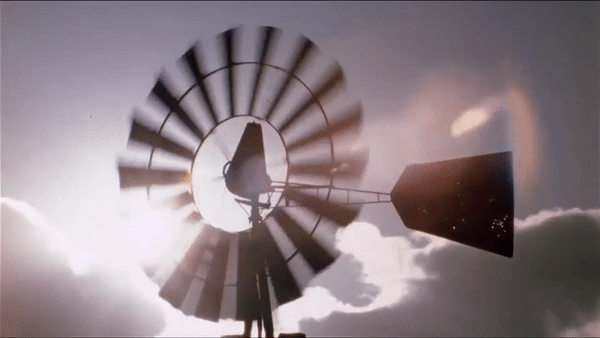
55. The Insert Shot
Often called as the B-roll, Insert shot are the shots of location, props or action that are taken as substitutes or insurance for editing. Many of these shots are done by a second unit.
Camera Movements

56. The Static Shot
The shots where the camera does not move at all is called a static shot. If you choose to use a static shot, then you will have to make sure then the scene actually calls for a static shot. Confrontations, conversations, courtroom arguments can and have used static shots to tell the story better.

57. The Panning movement
When the camera pans left or right in normal to slow speed. The panning movement is a good way to reveal something new to the audience. Wes Anderson is long time avid user of the panning movement throughout his filmography.
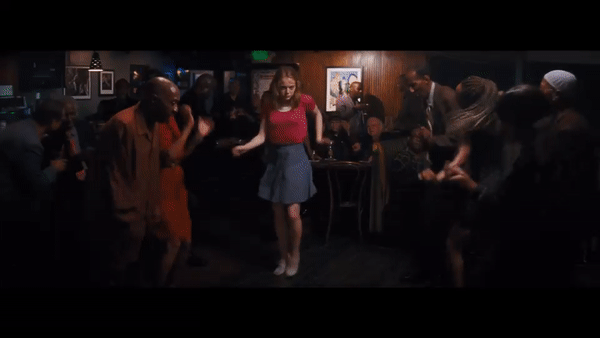
58. The Whip Pan/Swish Pan
When the camera pans left or right at a high speed creating streaks of motion blur. This technique has been used innumerable times to hide cuts within the scene and make it look like the scene has been shot in one take. The most famous use of the whip pan in modern filmmaking would be by Damien Chazelle in Whiplash and La La Land.

59. The Tilting movement
When the camera tilts up or down in a normal to slow speed. Used by many filmmakers throughout generations of filmmaking, these simple movements can be critical to storytelling.

60. The Whip Tilt
When the camera tilts up or down at a high speed creating a very pronounced motion blur. Whip tilt has been used as often as the whip pan and for the same reason as the whip pan i.e. to hide cuts in edit.

61. The Slider movement
When the camera moves across a small distance on a slider, that movement is called the slider movement. Often called as the poor man’s dolly, the slider movement is a handy technique to create somewhat of the same effect as the dolly when you are on a low budget.
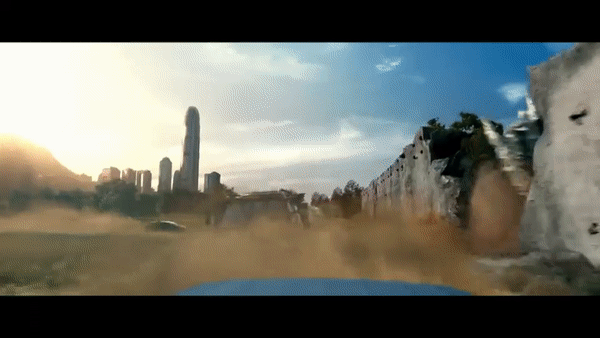
62. The Vertical slider movement
Same as the slider movement, but the camera here moves vertically on a slider. Easy and cheaper substitute to getting a jib or a crane.

63. The Tracking Shot
A camera moving sideways or in an angle where it is tracking a subject movements is said to be in a tracking movement and is often called to be a tracking shot. Dollies, cranes, Steadicams or even handheld can be used to execute the tracking shot. The tracking movement is easily achievable through a variety of techniques and apparatus.

64. The Crab Shot
When the camera moves strictly sideways, parallel to the plane of the shot. As the name suggests, this shot is also restricted to one plane of movement. The famous hall fight scene of Old Boy is a good example of a perfect crab shot.
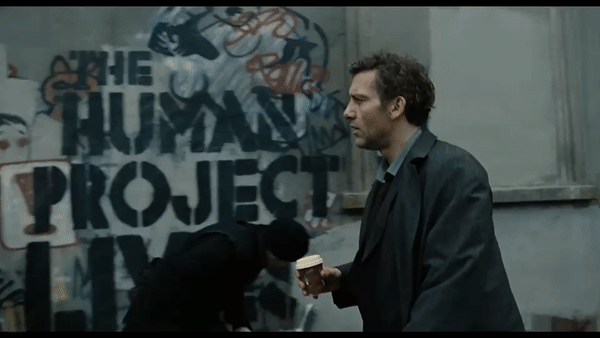
65. The Shoulder Mounted movement
When the camera is mounted on the operator’s shoulder and moves with the operator. This is a good way to get a shot from the eyeline perspective. One of the most notable uses of this movement was in the opening scene of Children of Men by Alfonso Cuaron.

66. The Handheld movement
When the camera is handheld with a range from face to ground. This is the most used movement for almost every independent film made. It provides the most versatility in terms of the plane it can traverse in. It is cheaper than every other option that is available to film.

67. The Gimbal movement
The amateur’s Steadicam, the gimbal movement occurs when the camera is placed on a gimbal and moved to capture the shot. It does not provide the same versatility as the Steadicam but it does get the job done. You can easily point a gimbal movement when it takes longer for the camera to pan left or right and the footage is ominously stable.

68. The Steadicam movement
Mounting the camera on a steadicam will always give you stable and steady footage. Steadicam operators often move in every plane humanly possible. The professional’s choice to shoot will always be with a steadicam.

69. The Wire Shot
When the camera is on a wire or a zipline typically incorporating a high camera angle. This movement is usually used to film inserts for chase scenes and can be the responsibility of the second unit. It is not advisable to shoot and show a lot using this angle as it is restricted to a single plane.
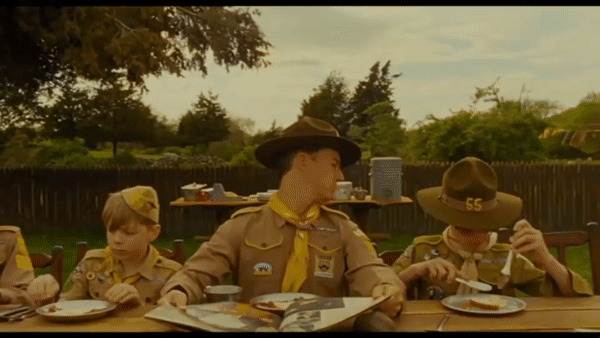
70. The Dolly shot
When the camera moves in or out on a dolly, that movement is called the dolly movement. Often times it is combined with some sort of vertical movement too. Dollies are pretty expensive to set up and require a whole lot of effort to execute. Dolly will have a platform for the camera, a seat for the operator and tracks laid down in the direction that the camera is supposed to move in. It is often pushed manually by camera assistants or dolly operators.

71. The Zoom in
When the lens zooms in by changing its focal length it is said to be a zoom in movement. There are many variables when it comes to executing the zoom in such as the lens having a fixed aperture or a variable aperture, the lens being parfocal or not and having a focus puller who can maintain the focus if the lens is not parfocal.

72. The Fast Zoom in
When the camera zooms in on a wide angle and also to a close up to create greater range in editing, then it is said to have a fast zoom in movement. Having a parfocal lens is detrimental to the execution of the fast zoom in movement. Stanley Kubrick has used this movement in The Shining. Another good example would be in Quentin Tarantino’s Django Unchained the introduction of Leonardo DiCapiro’s character.

73. The Zoom out
When the lens zooms out on the subject by changing the focal length of the lens. It is a good technique to use when you want to reveal more about the environment that the character is in. Use this with caution, as there are many other factors that weigh in when you want to change the focal length of a lens. Majorly the focus and the light that the lens will allow in will be your major concern.

74. The Vertigo Shot
Combining the Zoom in with a Dolly out or a Zoom out with a Dolly in will lead to a vertigo movement. It is imperative to maintain the frame size of the shot otherwise the vertigo dissipates. This movement takes synergy and lot of practice to execute properly. But once executed properly, this movement can incite a different type of unease and unrest in the audience’s perspective. It can extend or reduce distances to the subject in frame. Majority of the effect has to do with the telephoto compression which gets toggled once you zoom in from a wide angle to a telephoto angle. It can be done slow or fast, slow for a subconscious effect and fast for an unnerving, apparent effect. This movement was first seen in Alfred Hitchcock’s Vertigo, hence the name. It is also called the Hitchcock shot or the Dolly Zoom. La Haine and Jaws are some of the films to use the Vertigo Movement.

75. The Arc movement
When the camera moves around the subject in an arc it is called as the arc movement. This movement has often be used to shoot action sequences, gun fire scenes etc.

76. The Bullet time Shot
When the camera moves around the subject seamlessly and slows down mid movement to focus and give the illusion of time slowing down to the point where it seems impossible. It can be compared to time standing still. This movement has been used to slow down time to the point where you can actually see a bullet travelling. To execute this movement requires a lot of work. At the same time an array of cameras shoot the same scene from different angles and then it is played orderly to achieve the illusion of time standing still. A great example of this shot would be in The Matrix with Neo dodging the bullets shot by Agent Smith.

77. Stop Motion
One of the most tedious ways of story telling will have to be the Stop Motion Movement. In this method, you take photographs of every tiny movement and then run it as a frames to create a shot. Movies like Isle of Dogs and Chicken Run are prime examples of Stop Motion filmmaking, they were made by using clay models and are also called “Claymation”. Many animation films are made using this movement. It is highly tedious and a small piece of footage can take days or weeks to execute.
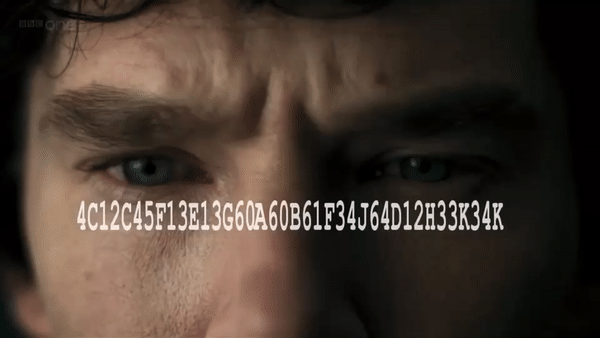
78. The Motion Graphics Shot
When the shot incorporates motion graphics or animation for information purposes it is said to have motion graphics movement. In BBC’s recreation of Sherlock, motion graphics are included artistically to show the audience what Sherlock is deducing while he is deducing it. This inclusion of motion graphics helps the audience to keep up with the speed of Sherlock’s deduction and actually keep them in the know how of Sherlock’s mind. Now, the audience does not feel left out and dazed by the character but included in the story itself.

79. The Motion Capture Movement
A precisely positioned repeatable movement controlled by a computer, mainly used for visual effects is called as Mo-Cap movement. Many games and their cutscenes use this technology to capture information and footage for their games. This is also used in superhero films to edit in the costumes and VFX later in post. Benedict Cumberbatch’s performance of the Smaug in Hobbit: Desolation of Smaug was captured using this technique.

80. The Jib Movement
When the camera is mounted on a Jib arm and is a free to move in a 3D plane, such movement is called as the Jib movement. Jib arms provide amazing versatility and freedom when you want to move the camera.

81. The Crane Movement
When the camera is mounted on a crane and can move greater distances than a jib in the 3D plane. Cranes are probably the most versatile movement technology available as of now to film with. Sam Mendes’s 1917, shot by Roger Deakins, was shot majorly on a crane to provide absolute freedom to maintain that one take look throughout the film.
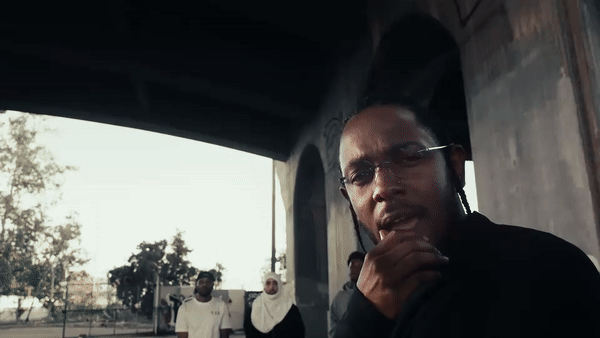
82. The Robot Arm Movement
To execute the robot arm movement, the camera is mounted on a robot arm like the Bolt which can be used to move very precisely and smoothly from one point to another. Cinematographers often use super slow motion with these arms. These arms can be used for action scenes and stunts. Otherwise use of this movement will be very stylized and subjective. Alfonso Cuaron’s Gravity relied heavily on these robot arms to create those perfect, precise and calculated shots that was needed to recreate floating in space somewhat accurately.
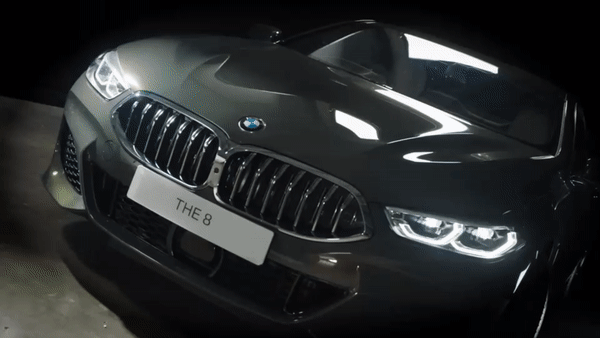
83. The Doggy/Buggy Cam movement
When the camera moves close to the ground it is said to be in a doggy or a buggy movement. The best way to execute this shot is to rig up a remote controlled car or a buggy with the camera setup. It will always be used in car chase scenes or chase scenes in general as it provides an interesting perspective.

84. The Car Rig Movement
When the camera is mounted on a car to film scenes either in the car or outside the car, it is said to be in a car rig movement. These rigs are often used to film shots within the car and even the exterior of the car. Quentin Tarantino’s Death Proof utilized the car rig movement to film majority of their car scenes.

85. The Slow Shutter Shot
When the shutter speed of the camera is intentionally set to a low shutter speed to get pronounced motion blur in the shot, the shot is then said to have slow shutter movement. This movement brings in a lot of chaotic energy into the shot, as the motion blur is more than expected, the whole shot seems very chaotic. You can also use this effect to show that time has slowed down. The most noteworthy use of this technique is in Saving Private Ryan’s storming the beach scene. The slow shutter speed movement adds heavily to the chaos of the battlefield.

86. The Process Trailer Shot
When cameras are mounted on a trailer towed by a tracking vehicle for the purpose of being used as a moving camera platform, it is known as the process trailer movement. This provides better freedom and versatility when trying to shoot vehicle scenes. As the car is not subjected to the limitations of traffic and size, the DoP has a better range to shoot their scenes with. This is preferrable for many big budget films as it is the most authentic to way to shoot a car scene, but also the most expensive one. Alfonso Cuaron’s Children of Men has a fantastic one take which was shot entirely on the process trailer movement.

87. The Poor man’s Process
In this way of the process movement, the car and camera are static but the illusion of the movement is made real by lights and sometimes VFX. This can work very well if your shots don’t include much of the background and are majorly consisting of closeups of the actors. It is far cheaper than the actual process trailer and can often get the job done quicker than the process trailer.

88. Timelapse
When a greater time period is shown to pass by taking shots from a photography camera and playing them in the order, which were clicked in a predetermined manner and at regular intervals. Breaking Bad has many of these shots to show the sunrise of the next day and sunsets to show the passage of time.

89. Hyperlapse
Hyperlapse is achieved when a timelapse footage is combined with motion and it appears to move over great distances. It speeds up time and combining movement to timelapse can make the footage look more exciting. In Lucy by Luc Besson, hyperlapse was used to show that Lucy was racing through time herself. The uses of hyper-lapse in film are limited but that is not to say that they can be used for multiple purposes.

90. Slow motion
When the camera shoots at a higher FPS to slow down the footage later in post. The slow motion is often used for hero shots but can also be used to show time slowing down and the character being focused. There are many ways to use the slow motion movement. Such as, in “300” by Zack Snyder, used slow motion to create interesting and stylized action scenes. The forest chase scene in Guy Ritchie’s Sherlock Holmes : A Game of Shadows uses a lot of slow motion moments to slow down certain seconds of the scene before it kicked back into normal speed again.

91. Fast Motion
Fast Motion movement is achieved by shooting at a lower FPS to speed up the footage later in post. If the speed is high enough, footage at night time can look like moving lights. Flash’s super speed is all shown through the use of fast motion movement. Charlie Chaplin often used the fast motion movement to make his and the actors’ actions look more comical on screen.

92. Camera or Image Shaker Movement
When a dedicated camera shaker is used to shake the image during a shot it will be in an image shaker movement. This movement is often used to show an earthquake or any natural phenomenon where the ground shakes. Almost every calamity scene that has ever been filmed will have the image shaker movement in it.

93. Shaky Cam
Often done hand held, the shaky cam movement is achieved when the camera operator shakes the camera during a scene manually. This movement is usually used in scenes which are a bit chaotic. Chase scenes, action scenes, gunfights, hand to hand combat will use the shaky cam movement to increase the chaotic energy of the scene. Half of the scenes in Bourne trilogy have used the shaky cam movements in order to truly capture the chaos that is Bourne’s life.

94. Extreme Slow Motion Movement
When the subject is filmed at a greater fps than 1000 and then slowed down later in post is said to be in extreme slow motion. It is a very stylized choice for many filmmakers but certain shots will call for the use of this technique. It will be an extremely expensive affair as the technology of capturing footage at 1000+ fps has not yet been democratized.

95. The Table 360 Pan
Made iconic by That 70s show, the table 360 pan movement is achieved by keeping the camera at the centre of table and panning it left or right to different actors. This method is especially used when trying to capture a roundtable conversation.

96. The Action or the Helmet Camera Movement
When the camera is mounted on a helmet, usually accompanied with a wide angle lens. Many major skydiving scenes in films like Mission Impossible 6 and Fast and Furious 7 have been filmed using a helmet camera movement. Many stunt professionals use these action cams to film and create their own films.

97. The Body Camera
The Body cam movement is executed by attaching the camera to the body of the performer. The most recognizable use of the body cam is the snorricam where the camera is attached to the actor’s body and is usually facing them as they move through the scene. Darren Aronofsky’s Requiem for a Dream has used the snorricam to show the drugged state of the protagonist, in the Amazing Spider-Man, Peter hunting for his uncle’s killer has been captured on the snorricam as a stylistic choice of shot.

98. The Hidden Wipe
When the camera moves the frame to hide an incoming wipe from another shot. This technique has been used many times to hide cuts and transitions while trying to achieve a seemingly seamless one take. Here in Jaws, Steven Spielberg used the hidden wipe to draw our attention towards the observation of the character.

99. The One Take Shot
When a range of movement is carried out through the scene without cutting the shot at all, it is known as a one take movement. This movement is extremely difficult to shoot and execute. It requires a ton of planning and practice to actually execute it properly. Teamwork amongst the whole crew will be crucial to pull off a one take movement. Films like Sam Mendes’ 1917 shot by Roger Deakins and Alejandro González Iñárritu’s Birdman shot by Emmanuel Lubezki has some prime examples of one take movements in modern cinema. The one example from 1950’s that stands out to shine brighter than the rest is the opening sequence of Orson Welles’ Touch of Evil shot by Russell Metty. To actually execute a fantastic one take with the technological limitation of the 50s is truly remarkable in itself. This opening sequence has been hailed as the standard for a proper one take in the industry since it hit the cinema screen in 1958.

100. The Freeze Frame Shot
Often used as the last frame of the film, the Freeze frame movement is achieved by keeping a single frame running for several seconds after which it eventually fades out. The most iconic freeze frame will have to be in The 400 Blows, directorial debut of the legend Francois Truffaut. Probably the most famous freeze frame in pop culture would be the last frame of The Breakfast Club.
Well that’s that.

4 replies on “100 Camera Angles, Shots and Movements in Filmmaking”
Uweeee! lots of angles and movements. I have been practicing anomation some lately. Gonna give a lot of these a shop. The manga and anime directors are big on unusual angles. Thanks for posting.
You’re welcome!
Oh, and the DoP was Sergei Urusevsky.
You wrote “The one example from 1950’s that stands out to shine brighter than the rest is the opening sequence of Orson Welles’ Touch of Evil shot by Russell Metty.” While that’s a great shot, I’d also mention the shot in “Soy Cuba”, another great achievement in it’s time.